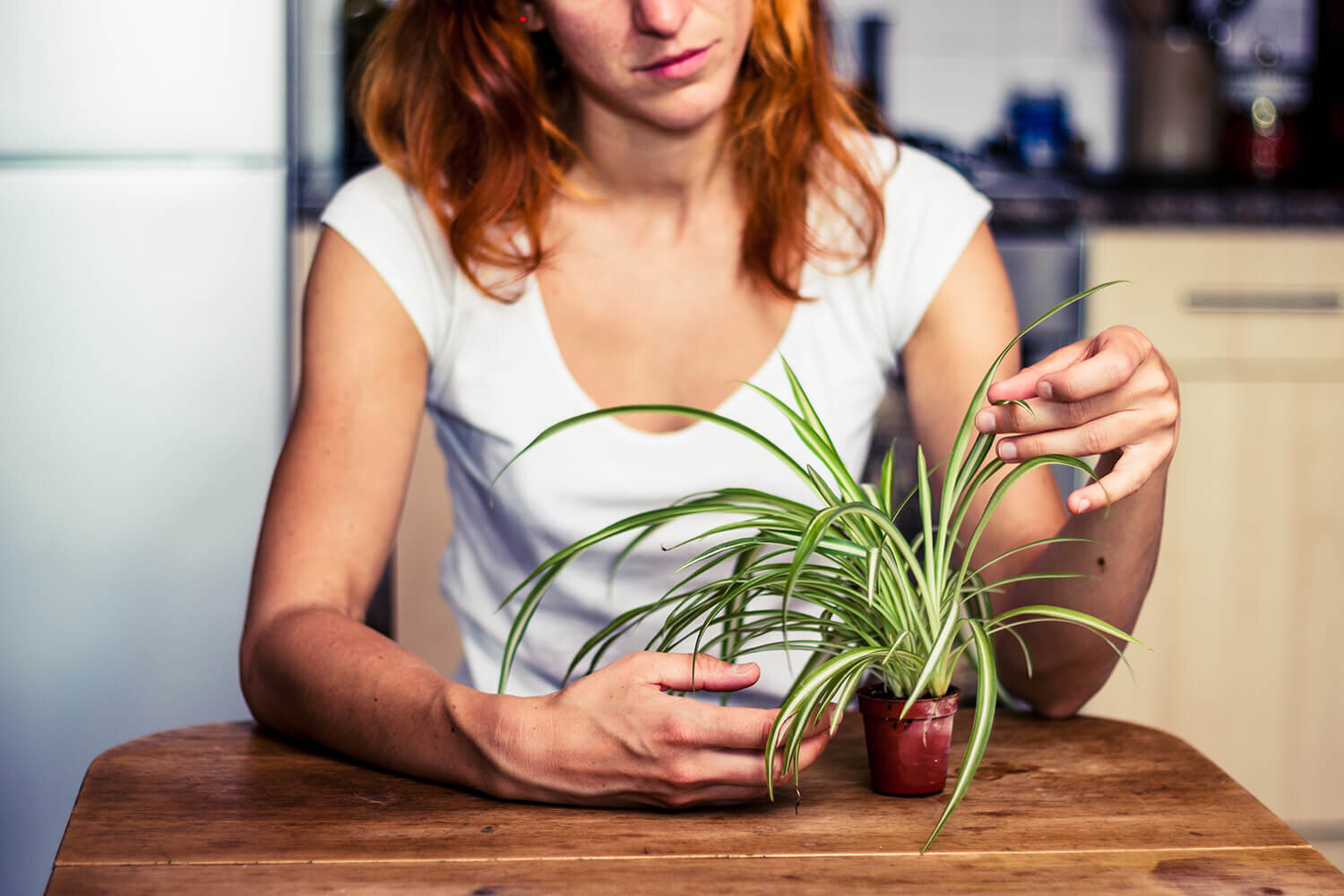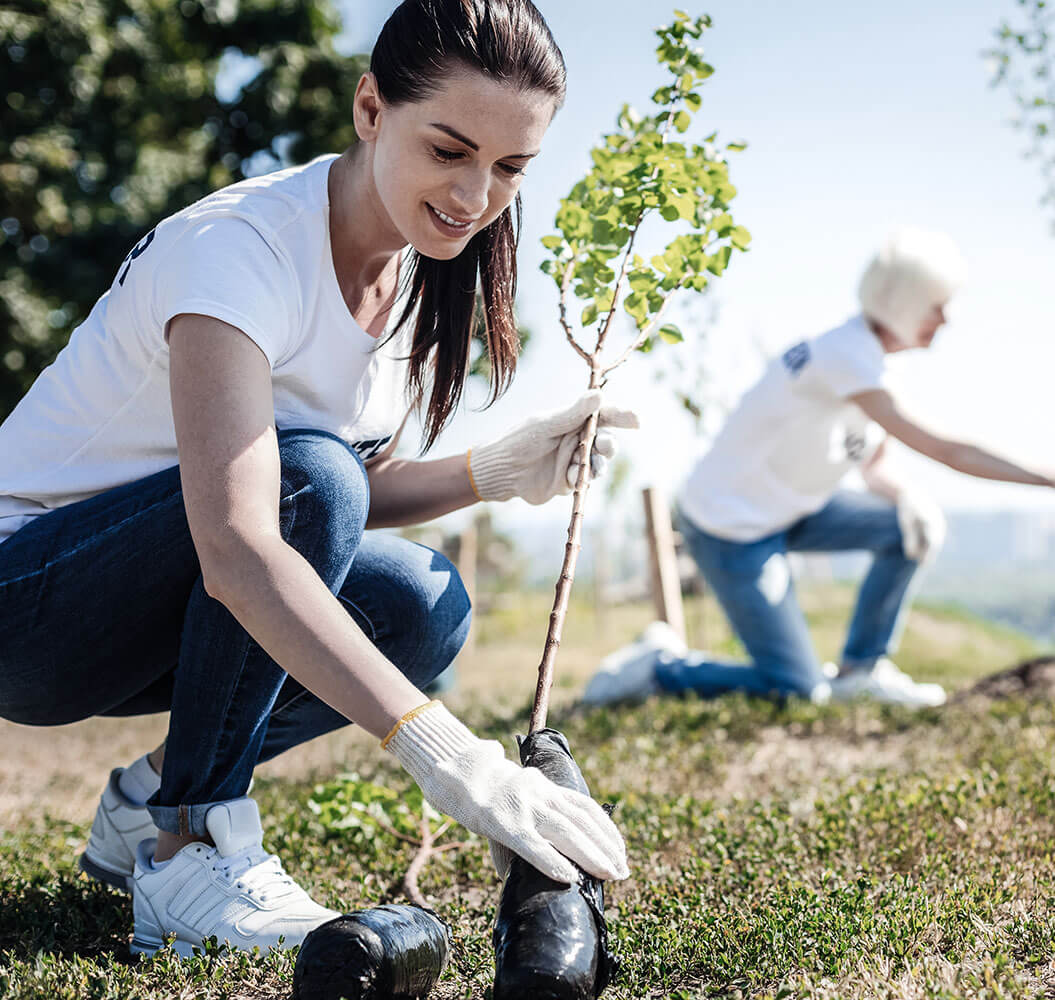Bring Nature Indoors With Air Purifying Natural Houseplants
The healing aspect of nature has been something many people touted for years, but now there’s actual science backing these claims. Recent studies suggest that spending around 120 minutes in nature can promote good health and wellbeing.
Despite this, the average person spends around 90 percent of their time indoors due to their job and the availability of easy to access entertainment thanks to technology. Unfortunately, staying indoors that you’re in contact with higher concentrations of some pollutants indoors than outdoors. This, in turn, can lead to health issues such as irritation of eyes, nose, and throat, and, in some cases, respiratory diseases and heart diseases.
For most people, the bulk of their day requires them to stay indoors due to work. Then the demands of household work require more time indoors. By the time you’re done with dinner and cleaning, it’s already dark and you probably don’t feel like heading outside.
While actually getting outside is the best option, another great way to get a little more nature is to bring it indoors with houseplants.
Bring Nature Indoors With Natural Houseplants
Not only are houseplants great for adding some visual beauty to your home and/or office, but they’re also great for your health. Plants help absorb carbon dioxide and release oxygen into their environment.
This helps freshen the air and remove harmful toxins. In fact, studies suggest houseplants can remove up to 87 percent of air toxins in 24 hours. Better air quality can help improve overall concentration and productivity, reduce stress, and boost your mood.
If you’re looking to spruce up your home and office with some greenery, it can be a bit daunting to choose the right plant. There are dozens to choose from and some require more care than others. Luckily, you don’t need to be born with a green thumb to care for a majority of houseplants. The plants below are perfect for beginners.
What are Indoor Plants
What are indoor plants?
Indoor plants are pretty much what they sound like. They are plants that are grown indoors in homes and or offices. Generally speaking, they’re used for decorative purposes.
Unlike outdoor plants, indoor plants come in containers. While you can always move them to a larger one or a container that fits your house aesthetic, it’s not necessary.
For the most part, indoor plants don’t require as much sunlight and water as outdoor plants. With that said, you should ask someone in the plant department how much sunlight and water a plant needs. Succulents, for example, might not require a lot of water, but they do require continuous daily sunlight.
If your office or home doesn’t get that much light, you might have to look for something else. Luckily, there are plenty of low light plants that work perfectly for the house. The downside might be that they require more consistent watering.
What qualities make for a good indoor plant?
When selecting a good indoor plant you should look for the following:
Signs of disease - this is especially important when buying from a big box retailer as the staff generally does not have as much knowledge of the plants as they would if you purchase from a dedicated plant nursery. Look for white dots or sticky residue on leaves as well as a bad odor.
Foliage - Dense foliage generally means a healthy plant. When picking out the plant, keep a close eye on the foliage. If you can’t see through it, it’s thick enough.
Root system - The roots are the most important part when choosing a plant. Of course, it’s not always so easy to check it out, especially for larger plants. However, if you are getting smaller ones, you can easily lift the plant out of the pot to take a look. Healthy roots are thick and light in color.
Good Indoor Houseplants
Once you’ve found some healthy plants, it’s up to you to take care of them. If you’re a first-time plant owner you should either ask a store associate or do a little research on the plant when you get home for care tips on the specific plants you have bought. With that said, most houseplants require the following care:
Water - you’ll need to keep your plants watered in order to keep them alive. One of the biggest mistakes new plant owners make is to overwater their plants. If you notice the plant yellowing, that might be sign you’re overwatering. You want to make sure the soil isn’t too dry or too wet.
Light source - even plants that do well in low light require a bit of light every day. Make sure you place your plants near a light source, whether it’s natural or artificial.
Drainage - In general, the containers houseplants come in already have pre-made drainage holes. Still, you should check the bottom to make sure. If you don’t notice any, you can either drills some of your own or move the plant into another container.
How to re-pot indoor plants?
For the most part, you probably won’t have to re-pot indoor plants. However, there are some cases where might have to such as if the plant outgrows its container or if the container doesn’t have appropriate drainage holes. Some signs that your plant might need repotting include:
The plant is breaking the pot and the roots are coming out from the bottom
The plant has stopped growing and has developed yellow leaves
The plant cannot be removed from the pot due to thicker roots
Tips to re-pot indoor house plants
Once you’ve determined if your plant needs to get re-potted the most important thing to do is to choose the new pot. You want to choose something that is a few inches bigger than the actual plant so that it has enough room to grow.
After that, remove the plant from the original pot and then slash the roots slightly as this will help stimulate new root growth. Make sure you don’t completely destroy the roots, just give them a good trim.
Finally, put the plant in the new pot and make sure to fill in the pot with the appropriate soil. Make sure to water once you’ve repotted the plant as this will help release any air pockets and make sure the roots absorb the nutrients.
Now that you have the basics down, it’s time to choose your houseplant. The options below are perfect for beginners. If you have children or pets, make sure to do a bit of research to see if the plants are toxic.
Pets and young kids tend to put everything in their mouths. Should you still decide to purchase a toxic plant, make sure to put it somewhere your pets and children cannot reach.
Pothos Ivy
This lovely green plant has broad leaves and beautiful, broad dark green foliage with light green stripes. As it is an ivy, it has trailing stems that will grow downwards up to 8 feet. In order to keep your plant contained in its pot, it’s important that you cut it back so it doesn’t get too long.
Pothos Ivy is a popular houseplant because it requires minimal care and can thrive in a variety of lighting conditions. Still, it does best with some light. When watering the plant, make sure to let the soil dry somewhat before watering again.
Besides providing lovely foliage, the plant also has an air-purifying quality and can absorb and strip toxins from materials in the home.
Aloe Plant
Aloe Houseplant
This popular succulent requires very little water, making it perfect for someone who might forget watering every so often.
The long, pointed leaves have some spikes so you want to keep it away from young kids and pets. While aloe might not require a lot of water, it does require consistent temperatures of around 70 degrees and a lot of indirect sunlight.
This plant can grow to fairly large sizes, but you can keep it under control by trimming it back. Some varieties of aloe are also smaller than others such as aloe vera. These make excellent decorations and also have medicinal properties in the gel. The gel can help soothe burns, dry skin, and even acne.
Spider Plant
You’ve probably seen these plants in people’s homes. That’s because it’s incredibly easy to care for and you can easily propagate more plants from the base. The thin leaves add a nice visual interest to your room and can work well in a pot or as a hanging plant.
To keep the spider plant alive you need to keep make sure to water consistently as it prefers moist soil. It also requires bright to medium lighting conditions so you’ll need to keep it near a window. In terms of temperature, it thrives in 60 to 75 degrees.
English Ivy
English Ivy is a popular houseplant
This glossy-leafed, dark green ivy offers a hint of elegance and charm to any house. Much like other ivy plants, it can grow up more than 8 feet long if left unchecked.
So make sure you trim down the stems every so often to keep it in line. You can even use the cuttings to propagate some more plants for your house or to gift to a friend.
English ivy tends to do best in moist soil and cooler temperatures. The best temperature is between mid-50s to around 70 degrees. While it can definitely grow in warmer temperatures it might not do as well. This ivy also does well in partial to full shade, making it a perfect plant for an office.
Jade Plant
If you’re looking for a succulent that’s easy to care for, but don’t want an aloe plant, then the jade plant might be your best bet. If your care for this houseplant properly, it can live for decades! It grows very slowly so you can keep it in the same spot for the entirety of its life.
Like other succulents, the jade plant doesn’t require a lot of water. You should wait until the soil is completely dry before watering again. It also prefers full sunlight for at least four hours a day, so it’s not a great option if your house or office doesn’t get a lot of light.
Rubber Tree
Rubber Tree - Easy-to-grow indoor houseplant
This easy-to-grow indoor houseplant can grow up to 8-feet tall making it a great way to add a lot of greenery into the room with just a single plant.
If you don’t have room for something that large, you can always prune the tree back to something more manageable. What makes this plant an attractive option is its shiny dark green leaves.
Taking care of the rubber tree is actually pretty easy. It doesn’t require a lot of water. In fact, you should wait until the soil is dry before watering it again. It does best in medium to bright lighting conditions so you’ll want to place this in a room that faces south for best light exposure.
Dieffenbachia
This stunning plant offers lovely light green foliage with a dark green outline. It’s sure to be a bright and cheery accent to any room. This is not a small houseplant.
The Dieffenbachia’s leaves can grow up to a foot long while the plant itself can grow up to 6 feet high, so you’ll want to make sure you have enough room in your home to place it before purchase.
Besides its attractive foliage, people also love the Dieffenbachia because it’s relatively low effort. It thrives at room temperature and doesn’t require a ton of light. In fact, it does best in medium to low-light conditions. It does prefer moist soil, so you’ll need to water it frequently.
Peace Lily
Peace Lily House Plant
You’ve probably seen these indoor plants pop up around Easter. The lily serves as a reminder that the holiday is a time for rejoicing and celebrating.
Even if you don’t celebrate Easter, the Peace Lily is a perfect accent for your home. The plant deep green foliage and simple but elegant white flowers.
While it might be beautiful, the Peace Lily is fairly low maintenance. It does best in rooms with low humidity and low light making it great for rooms with few windows. You’ll have to keep it watered frequently though as it prefers moist soil throughout the pot. In terms of temperature, it can tolerate up to 85 degrees!
Snake Plant
If you’re looking for a plant that requires very little work but still adds an interesting accent to your home then look no further than the snake plant. Their upright, variegated leaves can have yellow or even white edges. These plants can grow quite large, so if you want to keep it manageable, you’ll need to trim it back occasionally.
This indoor plant can thrive in a variety of light situations from bright to low. It does best in lower humidity and doesn’t require constant watering. Only water when the soil starts to dry out and make sure not to overwater! Drainage is especially important with the snake plant.
Ficus Plant
Ficus Plant - Popular house and office plant
This tree tends to be a common and popular plant in both the home and office. The shiny green leaves of the tree add cheer to any room. Its stems can also be braided for additional shape.
There are around 800 different varieties so you can find the one you like the best.
While these plants might be popular, some require more care than others. Most of these trees prefer full sun or, at the very least, bright, filtered light. Depending on the variety you get, they may prefer dry or moist soil so make sure to do a bit of research so you don’t randomly pick a ficus plant that doesn’t suit your needs.
Fiddle-Leaf Fig Tree
This gorgeous tree looks like it shouldn’t exist. The huge, dark leaves make you think the trunk should be much thicker than it actually is. These trees can get quite large, so if you want to keep it as an indoor plant, it’s important to keep it trimmed.
The Fiddle-Leaf fig tree does best in medium to bright light. It does best in temperatures between 65 to 75 degrees and doesn’t require constant watering. With that said, you should water the plant when the surface of the soil dries out.
Areca Palm
Areca Palm Houseplant
If you’ve been dreaming about visiting a tropical location but don’t have the time or money to do so, the Areca palm can bring a little bit of the tropics to your home.
This plant can grow up to 7 feet tall and its dense, thin leaves provide a dramatic touch to any room. Of course, if you want to keep it contained, you can always trim back the leaves so it doesn’t get too unruly.
Besides its good looks, many people like the areca palm as it doesn’t require direct sunlight and is fairly low upkeep. You only need to water it every other week as it prefers slightly dry soil. If you take good care of it, these plants can live up to 10 years!
Spruce Up Your Home Decor With Some Well Needed Air Purifying Natural Houseplants
Sprucing up your interior decoration with some houseplants is a great way to get some much-needed color and nature into your life. Plants are wonderful additions to any household and the ones above do especially well in indoor conditions. Better yet, many of them are beginner-friendly.
Many of them are also easy to propagate so once you get the hang of taking care of one, you can start decorating your house with more plants.
Of course, there are dozens of other plants to choose from if you’re looking for attractive indoor houseplants. With that said, many might require more maintenance and watering. You should do your research to find the best houseplants to fit your needs and lifestyle. If you’re unsure, you can always ask your local plant shop and/or nursery for some ideas.
Karen A Mulvey is a personal social blogger and mom with 14 years of experience in the every day world of motherhood and sustainable product research. Karen is on a mission to help everyday families select sustainable, non-toxic organic products, stop stressing about uncertainties on sustainable home goods and apparel, and start living the life they’ve always wanted.
Follow Karen at @karenAmulveycs | Karen A Mulvey






















